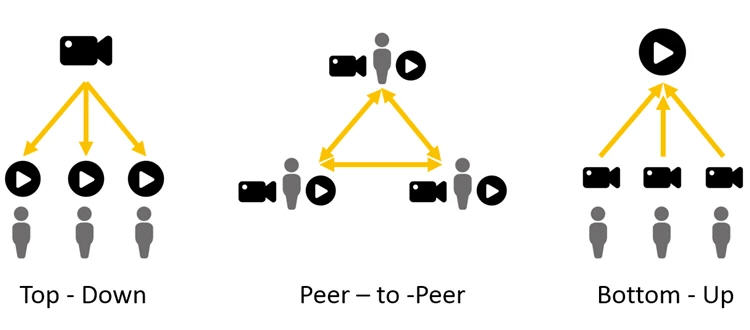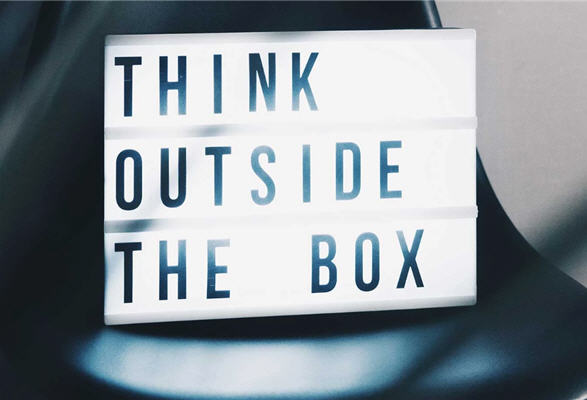Video (or audio) content is traditionally produced by an operational department (Communication, Marketing, HR, etc.) and is intended for employees, customers or the general public. This is referred to as “top-down” publication. It is the expression of the company.
Whether on specialized platforms such as YouTube, Dailymotion or Vimeo or on social networks and instant messaging such as Facebook, Instagram or Snapchat, video publishing is now a common practice for the general public. What is practiced in private life is easily transposed into the professional world. Applications that allow video sharing between employees of a company are referred to as “peer-to-peer“, which is a horizontal publication. We also refer to “corporate-YouTube” as the ability to publish, consult, comment, rate or share videos with colleagues, by being identified on the company’s network.
There is a third direction of publication: “bottom-up“. It consists of a large base of users producing content for corporate needs. An example is recording customer testimonials at points of sale and sending them to the marketing department head in order to create a promotional video. Another example is collecting footage shot by a multitude of guests at an event in order to produce a more original and less institutional report than if it had been done by a production company. Other examples include video contests, presentations by collaborators and teams, facilities visits, tutorials and other knowledge-sharing videos…

Streamlike has solutions for each publishing direction.
1) “Top-Down” applications
Our solutions are called StreamTV and StreamEmbed.
StreamTV :
Organization of your videos (and audios) in playlists, responsive interface, global search, display of related media, possibility to mix public and private content (requiring authentication), possibility of SSO connection, possibility of chaptering, subtitling, interactivity, individual audience monitoring for authenticated visitors etc.
Examples:
http://www.streamlike.tv/
http://viesdefamille.streamlike.com
http://canalzero.streamlike.tv
StreamEmbed :
Responsive formatting of the content of a playlist, to integrate it into a page.
Example: https://hector.streamlike.com/hosting/canalzero/streamembed
2) “Peer-to-peer” applications
The solution is StreamTube :
It is largely customizable. Here is a sample implementation: http://streamtube.streamlike.com/en
NB: It is quite possible to run a StreamTube in “Top Down” mode, to make it a webTV enriched with social features. Example: https://phytomer-econnect.com/en
3) “Bottom-up” applications
The solution is StreamWall. It includes a “wall” (StreamEmbed type) – that can be made public or not – on which you can display incoming videos, like a Facebook feed :
Here is a sample: https://hector.streamlike.com/hosting/sandbox/streamwall/
There is clearly no universal answer to very different needs, but Streamlike has solutions that can be easily combined to precisely meet your objectives.
Our expertise is at your service, to help you think “outside-the-box”.
